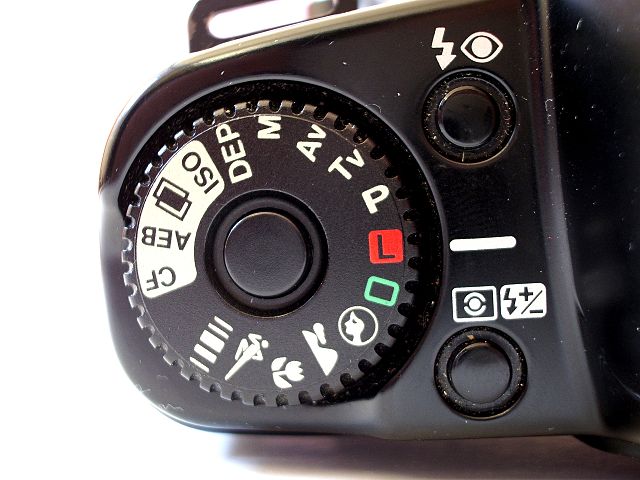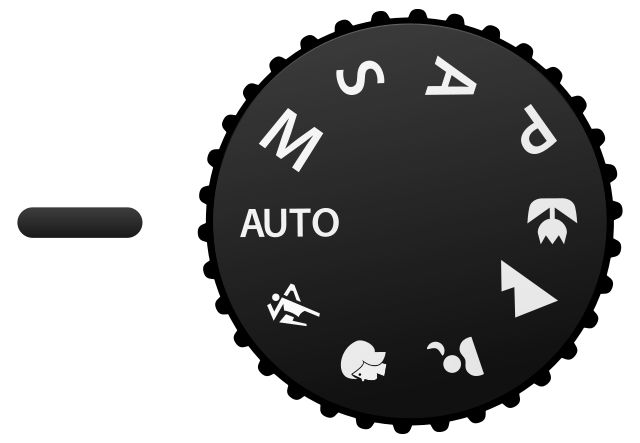Digital Single-Lens Reflex cameras work similar like compact cameras but have a mirror and a prism to find the object, and the shutter is a kind of curtain, that opens for a short time, and is closed after this again (and covers the sensor, the CCD chip).
The selection of the mode is handled by a small wheel. Here are two examples (coming from different camera producers, like Canon and Sony).


Tv Shutter priority
Shutter Priority (Tv or S) is where the user sets the shutter speed and the camera determines the aperture. Shutter Priority allows the user to control how “the action” is captured.
In “Shutter Priority” mode, you pre-set the camera’s shutter speed and the camera automatically selects the appropriate aperture for you, based on the amount of light that passes through the lens. If the aperture reaches the maximum you run into the problem of underexposed images.
Hint: When to select the Shutter Priority
You should use this mode if the shutter speed is an issue. This can be (for example)
- Sports
You want to freeze the movement - Flowing water
You want to freeze the water drops - Flowing water
You select a long shutter speed to blur the water so the movement of water becomes visible.
Hint: this leads to low shutter speed and may bring up blurred photos.
Hint: some camera producers call this mode the S mode (S stands for Shutter).
Av Aperture Priority
Aperture Priority (Av or A)
The user (pre)selects the aperture and the camera determines automatically the shutter speed. Aperture Priority allows the user to control the depth-of-field by selecting an appropriate aperture.
Hint: Since the shutter time is selected automatically a slow shutter speed might be selected. This endangers the problem of blurring. This will lead to an unsharpened image.
This mode enables full control over subject isolation, and you can play around with the depth of field. The increasing (or decreasing) of the lens aperture influences the depth of field. Anyway, there is the danger that the low shutter speed will core for blurred images (due to the trembling of your hands while taking the picture). The advantage of this setting is the fact that you have control over the depth of field while the camera does the calculation of the right shutter speed.
Autofocus selection
Most DSLR (and even compact cameras) offer different setting for the autofocus. The user may select with these settings how the autofocus will work.

This image shows the common symbols.
- Center-weighted metering evaluates the light in the middle of the frame and its surroundings and ignores the corners.
- Spot metering – the camera only measures the intensity of light from a small circle in the center of the scene.
- Partial metering works similar to spot metering; the difference to center-weighted averaging is how large that circle is.
- Evaluative metering was developed as a way of accurately metering off-centre subjects.
Manual Exposure
This enables to select both the shutter speed as well as the aperture.
As the name suggests, “Manual” mode stands for a full manual control of aperture and shutter speed. In this mode. This mode enables to set both the aperture and the shutter speed to any value you want manually – so you have full control. The problem is that you must estimate the correct well-fitting values of aperture and shutter speed - otherwise the images will be under- or overexposed.
Hint: Measure first the values either in the Av or Tv mode. Select these values on your camera and make a test image. If the exposure does not fit so correct one of the two values (depending on what is more important for you).
Motive programs
Most DSLRs support motive programs (or pre-sets) similar to the compact cameras.
The most common modes are
- Automatic
- Landscape
- Macro
- Night
- Portrait and
- Sports
The presets are managed by similar settings as the compact cameras use.